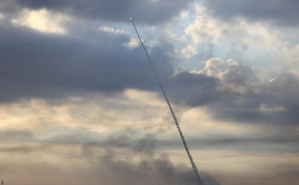Vienna : International Atomic Energy Agency (IAEA), the UN’s nuclear watchdog, has said that it saw “no immediate nuclear safety risk” but is exploring options to get water to keep Zaporizhzhia Nuclear Power Plant’s reactors cool after a dam in southern Ukraine was damaged.
“The water level in the reservoir that is supplying Ukraine’s Zaporizhzhya Nuclear Power Plant (ZNPP) has been falling throughout the day, but the facility has back-up options available and there is no short-term risk to nuclear safety and security,” IAEA Director General Rafael Mariano Grossi said on Tuesday.
Grossi, who addressed the IAEA Board of Governors on the evolving situation at Ukraine’s damaged Nova Kakhovka dam and its impact on the ZNPP, said that the loss rate had been changing, from around five centimetres per hour in the morning to nine cm/hour later in the afternoon.
Between 10 am and 8 pm local time, the reservoir fell by a total of 83 cm to 15.44 metres, according to regular data received by the team of IAEA experts present at the ZNPP.
“If and when the level goes below 12.7 metres, the ZNPP will no longer be able to pump water from the reservoir to replenish the reserves at the site. As the full extent of the damage to the dam is not yet known and the water loss rate is fluctuating, it is not possible to predict exactly when this might happen. If the current rate were to continue, however, this level could be reached in the next couple of days,” the IAEA chief said.
“Even at that low level, the existing water in the ZNPP site’s sprinkler and cooling ponds as well as the adjacent channels can still be used for some time to cool the reactors and the spent fuel pools in the reactor buildings, which could otherwise be damaged,” he added.
According to a statement by the nuclear watchdog, the IAEA team was informed by the plant that it has implemented measures to limit the consumption of water so that water is used only for essential nuclear-safety related activities such as the cooling of the reactors and the spent fuel pools.
Director General Grossi noted that Ukraine had carried out stress tests following the Fukushima nuclear accident in 2011, including the scenario of the Nova Kakhovka dam failing.
“There is a preparedness for events like this at Ukraine’s Zaporizhzhya Nuclear Power Plant, which will help staff to handle this new challenging situation. But, clearly, this is making an already very difficult and unpredictable nuclear safety and security situation even more so,” he said.
The Director General announced he will lead another IAEA rotation next week where he will assess the situation and address the current and planned measures with the plant management.






Related Posts
Israel attacks Iran’s Isfahan town
Explosions rock Isfahan province, Iran activates air defence system
Kenyan President confirms military chief’s death in plane crash